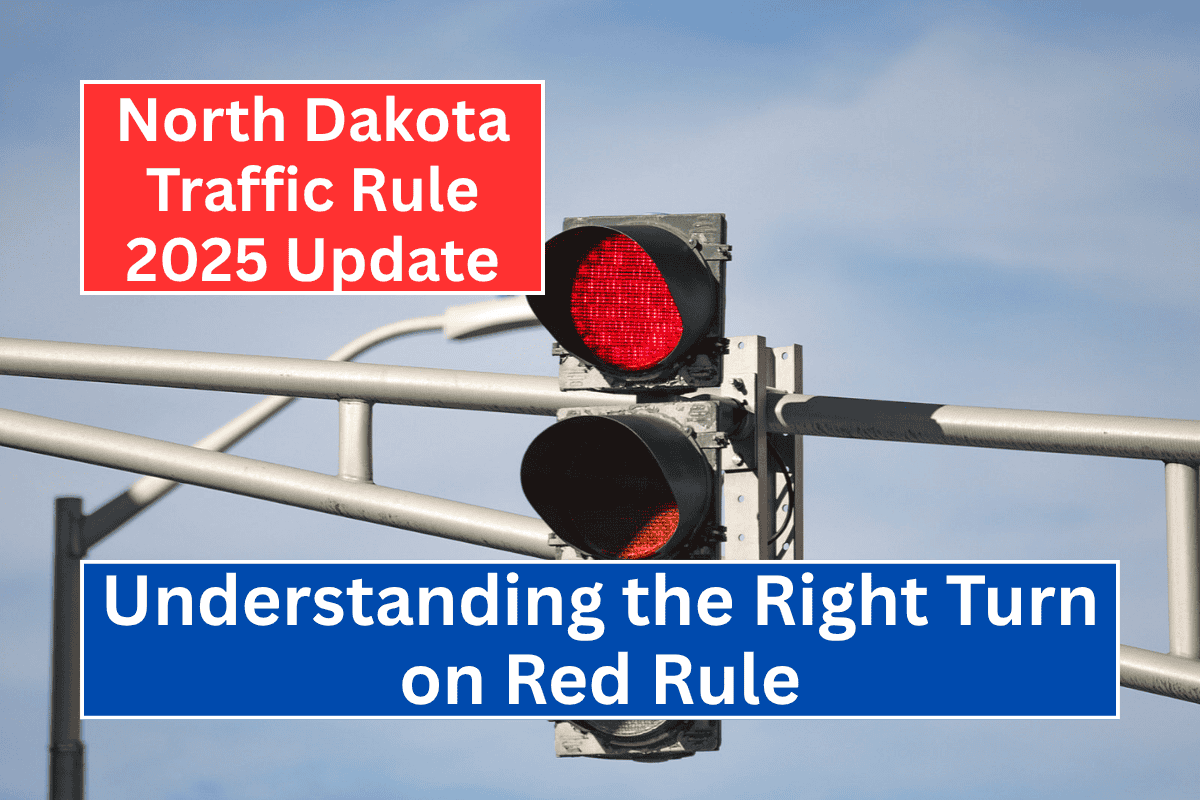As traffic safety continues to be a top priority, North Dakota has updated its traffic regulations concerning Right Turn on Red (RTOR).
With pedestrian fatalities reaching alarming numbers in recent years, the state is rethinking how to balance traffic flow with the need to protect vulnerable road users.
The upcoming changes, set to take effect in 2025, reflect growing concerns about RTOR laws’ impact on pedestrian safety. Here’s everything you need to know about the RTOR rule, its benefits, risks, and the latest regulations.
What is Right Turn on Red (RTOR)?
Right Turn on Red (RTOR) is a traffic rule that allows drivers to turn right at a red light after coming to a full stop, provided the intersection is clear of pedestrians and other vehicles. This practice is widely accepted in the United States and Canada, offering a more efficient way for traffic to flow.
However, the rules can vary by state, and in North Dakota, they are about to evolve as safety concerns grow.
Benefits of RTOR Laws for Traffic Flow and Efficiency
Despite the increasing concerns about pedestrian safety, RTOR laws offer several important benefits:
- Reduced waiting times: RTOR helps reduce the time vehicles spend idling at red lights. By allowing drivers to turn right when it’s safe, the flow of traffic improves, especially during busy hours.
- Fuel savings: One of the original motivations behind RTOR laws was to cut down on idling, which saves fuel and reduces emissions. This benefit remains significant today as it helps reduce carbon footprints.
- Improved traffic movement: With RTOR implemented carefully and responsibly, intersections see less congestion. This results in smoother transitions for both vehicles and pedestrians.
- Driver flexibility: RTOR gives drivers more options, especially in busy urban areas, helping reduce delays. This can be especially useful for deliveries, public transportation, and general travel.
Mixed Perspectives on RTOR Laws
While RTOR laws have practical benefits, there is a significant debate about their safety implications. Safety advocates argue that banning RTOR could help reduce pedestrian deaths.
Pedestrians, who often face the risk of being hit by turning vehicles, would have one less risk to worry about when crossing streets.
Experts suggest that before deciding to ban RTOR, it’s important to assess how it will impact both traffic flow and driver behavior. A well-balanced approach can help keep roads safe while still maintaining efficiency.
Basic Requirements for Making a Right Turn on Red
There are a few basic rules that drivers must follow when making a right turn on red:
- Come to a complete stop: The driver must stop fully at the red light. Rolling through a stop or failing to stop completely can lead to accidents or traffic violations.
- Yield to oncoming traffic: After stopping, the driver must give way to vehicles that have a green light. This includes waiting for a safe gap in traffic before turning.
- Watch for pedestrians: Pedestrians often have the right of way. Drivers must ensure the crosswalk is clear of pedestrians before making their turn. This is especially important in areas with heavy foot traffic.
Exceptions to the Rule
While RTOR is generally allowed, there are exceptions to be aware of:
- No Turn on Red Signs: Some intersections have signs that prohibit right turns on red. Ignoring these signs can result in traffic violations.
- Specific intersections: Certain locations, particularly those with high pedestrian traffic, may not allow right turns on red. For example, intersections near schools or parks may be restricted.
- Traffic signals and devices: Some traffic signals may explicitly indicate whether RTOR is allowed or prohibited. Drivers must pay attention to these signals to avoid violations.
State Implementation of Right Turn on Red (RTOR)
RTOR laws differ from state to state, and some have restrictions or outright bans:
- New York City: While RTOR is generally banned, it is allowed in certain areas with clear signage.
- Washington, D.C.: RTOR is allowed but may be restricted at intersections with high pedestrian traffic, especially near schools and parks.
- Seattle, Washington: Recent changes to traffic signals now prohibit RTOR by default in some areas.
In many cases, RTOR is only permitted at intersections with clear signage. Additionally, some cities have time-based restrictions, disallowing right turns on red during specific hours.
Right Turn on Red laws were introduced as a response to an energy crisis and continue to offer benefits today, such as reducing waiting times and fuel consumption.
However, as cities grow and pedestrian safety becomes a higher priority, it’s likely that more cities and states will reconsider these laws. In North Dakota, the changes coming in 2025 highlight the need for a balanced approach between traffic flow and pedestrian safety.
For drivers, understanding the updated RTOR rules and being mindful of exceptions and safety requirements will help ensure a smooth and safe journey.
Whether you’re driving in North Dakota or planning a trip to another state, always remember to stay aware of local traffic laws and practice safe driving habits.












